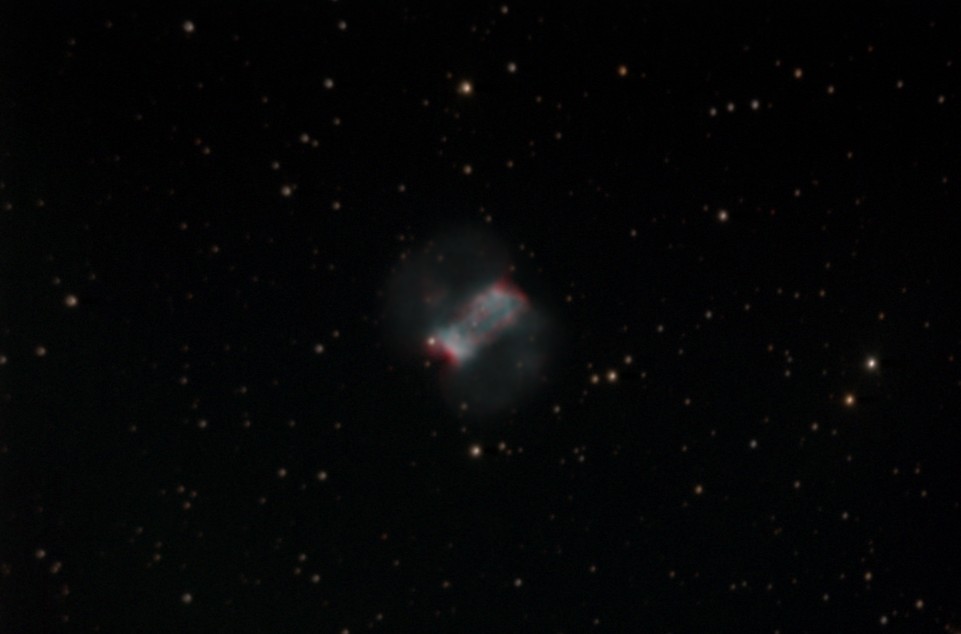
M76 is a faint irregular planetary nebula in the constellation Perseus. It is regarded by many as appearing to be a curious miniature of M27 (the Dumbbell Nebula) when viewed visually through a small telescope. As a result, M76 has the popular name as the Little Dumbbell Nebula. It is regarded by many as the faintest object on the Messier List, although it is technically tied with M91 and M98 at magnitude 10.1. The dim outer loops of gas on either side of the bright rectangular central portion are exceedingly faint. M76 is a roughly rectangular or box shapped nebula about 3.1 arc-minutes in size. The central star shines at magnitude 16.6 and is extremely hot at 60,000 degrees Kelvin.
This nebula was discovered by P. Mechain in September 1780. Charles Messier discovered it a few weeks later and added it to his catalog as the 76th object on the list. This nebula is listed as two objects in the NGC catalog, i.e., as NGC 650 and NGC 651.
This is an RGB color composite CCD image taken with a Takahashi Mewlon 250 telescope using an ST-8XE CCD. The image was taken from my backyard in Scottsdale, Arizona.
M76 (NGC 650 & NGC 651)
Constellation: Perseus
RA: 01h 42m 18s Dec: +51d 34' 17" (J2000)
December 22, 2008
Image by Sid Leach
Scottsdale, Arizona
Recent Images.
Complete list of images.
Description of equipment used to acquire images.
Home
Feedback and comments should go to Sid